In today’s world, there’s a significant shift towards sustainability, especially in the realm of dining. Eco-savvy diners are increasingly seeking options that not only satisfy their palate but also contribute positively to the planet. This movement has paved the way for innovations like palm leaf plates, which stand at the intersection of eco-friendliness and practical dining solutions.
Table of Contents
What Are Palm Leaf Plates?
Palm leaf plates are a product of ingenious eco-conscious thinking. Made from the fallen leaves of the Areca palm tree, these plates are crafted without cutting down a single tree, making them a stellar example of sustainable production. The process involves collecting fallen leaves, washing them, and then pressing them into various shapes and sizes to suit different dining needs.
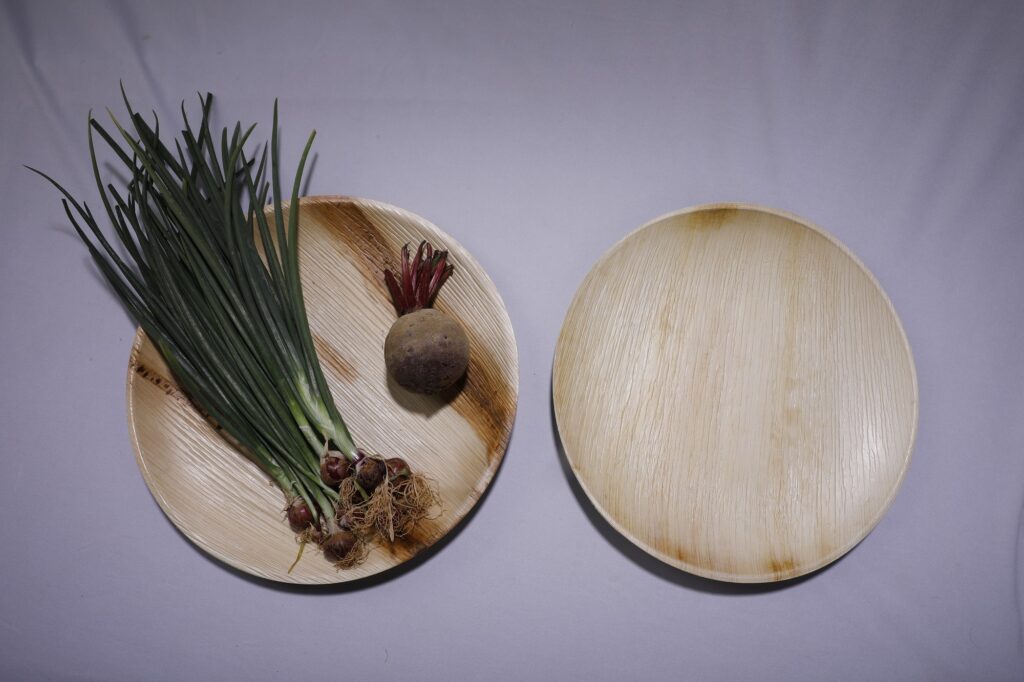
The Sustainable Choice
Choosing palm leaf plates is a step towards a sustainable future. They are 100% natural, biodegradable, and compostable, making them a far superior choice over plastic or even paper plates. This choice significantly reduces one’s carbon footprint and supports a more sustainable lifestyle.
Benefits of Choosing Palm Leaf Plates
1. Environmental Sustainability: The most significant advantage of palm leaf plates is their minimal environmental impact. Made from the fallen leaves of the Areca palm tree, these plates are a byproduct of natural processes, requiring no additional cutting down of trees. After their use, they can be composted, breaking down into nutrient-rich soil without leaving behind harmful residues. This cycle of natural production and decomposition makes palm leaf plates a poster child for sustainability.
2. Biodegradability and Compostability: Unlike plastic or styrofoam options, palm leaf plates are 100% biodegradable and compostable. They naturally decompose within a few months in a composting system, turning into compost that can nourish plants and soil. This feature significantly reduces waste in landfills and mitigates the environmental damage associated with disposable tableware.
3. Chemical-Free Production: The production of palm leaf plates does not involve the use of chemicals, making them a safer option for both humans and the environment. The leaves are simply cleaned, dried, and pressed into shape using heat. This natural process ensures that the plates are free from toxins and safe for all, including children and those with chemical sensitivities.
4. Durability and Practicality: Despite their natural composition, palm leaf plates are surprisingly durable and sturdy. They can handle hot, cold, wet, or dry foods without getting soggy or losing their shape, making them suitable for a wide range of culinary applications. This durability ensures that they are not just environmentally friendly but also practically efficient.
5. Unique Aesthetic Appeal: Each palm leaf plate has a unique texture and pattern, adding a rustic yet elegant charm to any table setting. Whether it’s a casual outdoor picnic, a formal dinner party, or a wedding, these plates can elevate the dining experience with their natural beauty and distinctive appeal.
6. Versatility: Palm leaf plates come in various shapes and sizes, catering to different dining needs and preferences. From small appetizer plates to large dinner plates, and even bowls, their versatility makes them suitable for any occasion, be it everyday meals or special events.
7. Health Benefits: Using natural materials like palm leaves reduces exposure to plastics and other synthetic materials that can leach chemicals into food, especially when heated. This makes palm leaf plates a healthier choice for serving food, contributing to overall well-being.
8. Cost-Effectiveness: When compared to other eco-friendly alternatives, palm leaf plates are competitively priced. Considering their durability, aesthetic appeal, and environmental benefits, they offer great value for money, making them an accessible option for those looking to make sustainable choices without breaking the bank.
9. Ease of Cleanup: Designed for single use, palm leaf plates make cleanup a breeze. This convenience is especially beneficial during large gatherings or events, where the volume of dishes can be overwhelming. Their compostability adds to the ease, as they can be disposed of without guilt.
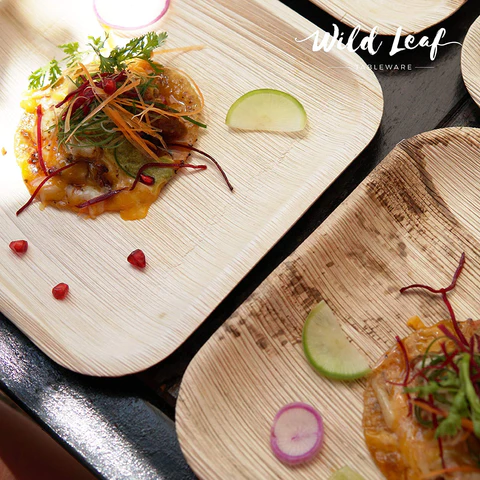
Environmental Impact
1. Reduction in Deforestation: Palm leaf plates are made from the fallen leaves of the Areca palm tree, which means their production does not contribute to deforestation. This is a significant advantage over paper products, which often require the cutting down of trees, and plastic products, which rely on the extraction and processing of fossil fuels. By choosing palm leaf plates, we support practices that preserve our forests and natural habitats, vital for biodiversity and carbon sequestration.
2. Lower Carbon Footprint: The carbon footprint associated with the production, transportation, and disposal of palm leaf plates is considerably lower than that of plastic or paper alternatives. Since palm leaf plates are made from naturally fallen leaves, the energy required to produce them is minimal. Additionally, because they are biodegradable and compostable, they do not contribute to the long-term pollution and greenhouse gas emissions associated with landfill waste.
3. Reduction in Water Use: The production of palm leaf plates requires significantly less water compared to the manufacturing of paper plates or the cleaning of reusable dinnerware. This lower water footprint is crucial in a world where water scarcity is an increasing concern. By minimizing water use, palm leaf plates offer an environmentally responsible choice for consumers looking to reduce their overall resource consumption.
4. Decrease in Pollution and Waste: Palm leaf plates contribute to a decrease in pollution and waste. Unlike plastic plates, which can take hundreds of years to decompose and often end up in oceans and waterways, harming marine life, palm leaf plates naturally decompose within a few months when composted. This natural decomposition process means they do not accumulate in landfills or contribute to the plastic pollution crisis, making them a far cleaner option for the environment.
5. Support for Sustainable Practices: Choosing palm leaf plates supports sustainable agricultural practices. The demand for palm leaf plates encourages the sustainable management of Areca palm trees, which can be grown in a way that supports local ecosystems and economies without the need for intensive farming practices or harmful pesticides.
6. Contribution to Soil Health: When composted, palm leaf plates contribute to soil health, adding valuable nutrients and organic matter that improve soil structure and fertility. This contrasts sharply with plastic disposables, which contaminate the soil and water with microplastics and chemicals as they slowly break down.
7. Encouragement of Eco-conscious Consumer Behavior: The choice to use palm leaf plates sends a powerful message about the importance of eco-conscious consumer behavior. It encourages individuals and businesses to consider the environmental impact of their choices and to seek out sustainable alternatives that reduce harm to the planet.
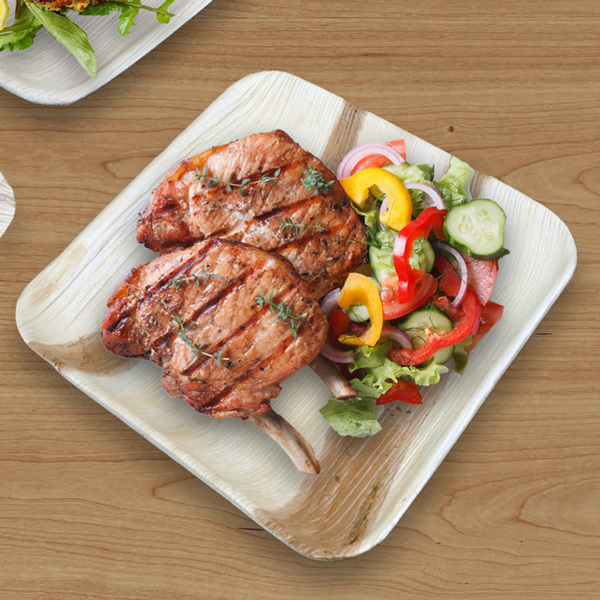
How Palm Leaf Plates Are Made
1. Collection of Fallen Leaves: The first step involves collecting fallen leaves from the Areca palm tree. This is a key aspect of the sustainability of palm leaf plates, as it does not require the tree to be cut down or harmed in any way. Workers gather the leaves that have naturally fallen to the ground, ensuring a renewable and ethical source of raw material.
2. Cleaning: Once collected, the leaves are thoroughly cleaned to remove any dirt or debris. This cleaning process is done using water and is often carried out manually to maintain the integrity of the leaves. The aim is to ensure that the leaves are clean and sanitary before being processed into plates.
3. Drying: After cleaning, the leaves are left to dry under the sun. This natural drying process eliminates the need for artificial heating or drying mechanisms, further reducing the carbon footprint of the production process. The duration of this step can vary depending on weather conditions, but it typically takes a few hours to a day for the leaves to dry completely.
4. Pressing: The dried leaves are then pressed into plates using heavy machinery. This machinery applies heat and pressure to mold the leaves into the desired shapes and sizes. The heat sterilizes the leaves, ensuring they are safe for food contact, while the pressure creates the plate’s structure. This process does not require any additives, glues, or chemicals, maintaining the natural composition of the plates.
5. Trimming: After pressing, the plates may have rough edges or irregularities that need to be trimmed. This step is often done manually, with workers shaping the plates to ensure they have smooth edges and a uniform appearance. Trimming also allows for the creation of various plate designs and sizes, catering to different uses and preferences.
6. Packaging: Finally, the finished plates are packaged for distribution and sale. The packaging used is usually eco-friendly as well, such as paper or cardboard, to keep the product entirely sustainable from start to finish. The plates are then ready to be shipped to retailers, restaurants, event planners, and consumers looking for eco-friendly disposable tableware options.
Palm Leaf Plates vs. Traditional Dinnerware
Environmental Impact:
- Palm Leaf Plates: They are highly sustainable, made from fallen leaves without harming trees, and are 100% biodegradable and compostable. This significantly reduces their environmental footprint compared to traditional options.
- Traditional Dinnerware: Ceramic and glass are durable and reusable, which is positive, but their manufacturing process is resource-intensive, involving high energy consumption and emissions. Disposable plastics and paper contribute to pollution and waste, taking years to decompose, if at all, and often end up in landfills and oceans.
Durability and Convenience:
- Palm Leaf Plates: Surprisingly sturdy, palm leaf plates can handle a variety of foods, including liquids, without bending or leaking. They’re ideal for both hot and cold dishes, offering a practical solution for events and everyday use without the worry of breakage.
- Traditional Dinnerware: Ceramic and glass dinnerware are long-lasting but can break easily, which may not be suitable for outdoor events or settings where durability is a concern. Disposable options offer convenience but lack the sturdiness and heat resistance needed for certain foods.
Aesthetic Appeal:
- Palm Leaf Plates: Each plate has a unique, natural look, adding a rustic charm to any meal setting. Their distinctive appearance can enhance the dining experience, especially at events where presentation matters.
- Traditional Dinnerware: Ceramic and glass options offer a wide range of designs and colors, allowing for a high degree of customization in table setting. However, disposable plastic and paper plates often lack the same aesthetic appeal and can feel less elegant.
Cost-Effectiveness:
- Palm Leaf Plates: They are competitively priced, especially when considering their eco-friendly benefits and aesthetic appeal. While initially more expensive than some disposable options, their environmental advantages and unique presentation can offer greater value in certain contexts.
- Traditional Dinnerware: Ceramic and glass have a higher upfront cost but are cost-effective over time due to their durability and reusability. Disposable options may seem economical but can become costly with frequent use and do not offer the same environmental or aesthetic benefits.
Health and Safety:
- Palm Leaf Plates: Being natural and chemical-free, palm leaf plates are a safe option for serving food. They do not leach harmful substances into food, unlike some plastics.
- Traditional Dinnerware: Ceramic and glass are generally safe, though some ceramics can contain lead or cadmium. Disposable plastics may release chemicals into food, especially when heated.
Adaptability and Use Cases:
- Palm Leaf Plates: Perfect for weddings, parties, picnics, and any event where disposability is key but sustainability is valued. Their natural aesthetic suits a variety of themes and settings.
- Traditional Dinnerware: Ceramic and glass are suited for everyday use and formal dining. Disposable options are convenient for casual, large gatherings but lack the environmental and aesthetic benefits of palm leaf plates.
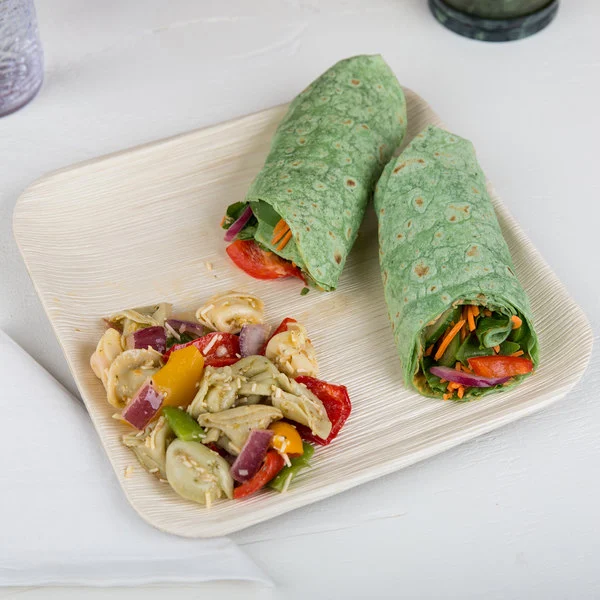
Integrating Palm Leaf Plates into Your Dining Experience
1. Everyday Dining:
- Sustainability Meets Convenience: For families looking to reduce their environmental footprint without compromising on convenience, palm leaf plates are an excellent choice. They can be used for casual meals, reducing the need for washing up and offering a guilt-free alternative to traditional disposable plates.
- Mix and Match: Incorporate palm leaf plates with your regular dinnerware for an eclectic, earthy vibe. Their natural patterns and textures can complement ceramic or glassware, adding a touch of rustic charm to your table.
2. Special Occasions and Dinner Parties:
- Elegant Presentation: The unique appearance of palm leaf plates can add an elegant, organic touch to dinner parties and special occasions. Pair them with linen tablecloths, natural fiber placemats, and fresh flowers for a sophisticated, eco-conscious table setting.
- Theme Integration: Palm leaf plates are perfect for themed events, such as tropical luaus, garden picnics, or rustic barn weddings. Their natural look and feel enhance the authenticity and atmosphere of your theme.
3. Outdoor Events and Picnics:
- Durability and Portability: Palm leaf plates are lightweight yet sturdy enough to handle a variety of foods, making them ideal for outdoor events, picnics, and barbecues. Their compostability means you can enjoy your event without worrying about the impact of your waste.
- Enhanced Dining Experience: Upgrade your outdoor dining experience by choosing palm leaf plates over plastic or paper. Their aesthetic appeal and environmental benefits make outdoor gatherings more enjoyable and responsible.
4. Professional Catering and Hospitality:
- Eco-Friendly Branding: For catering businesses and hospitality providers, using palm leaf plates can reinforce a commitment to sustainability, appealing to eco-conscious consumers and clients. They offer a point of differentiation that can enhance the brand’s image and appeal.
- Versatile Use: Palm leaf plates can be used for a wide range of catering events, from corporate gatherings to wedding receptions. Their natural elegance and disposability make them a practical, stylish choice for serving food.
5. Educational and Awareness Opportunities:
- Promoting Sustainability: By integrating palm leaf plates into your dining experience, you can educate guests and family members about sustainable living practices. They serve as a conversation starter about the importance of eco-friendly choices and the impact of our consumption habits on the environment.
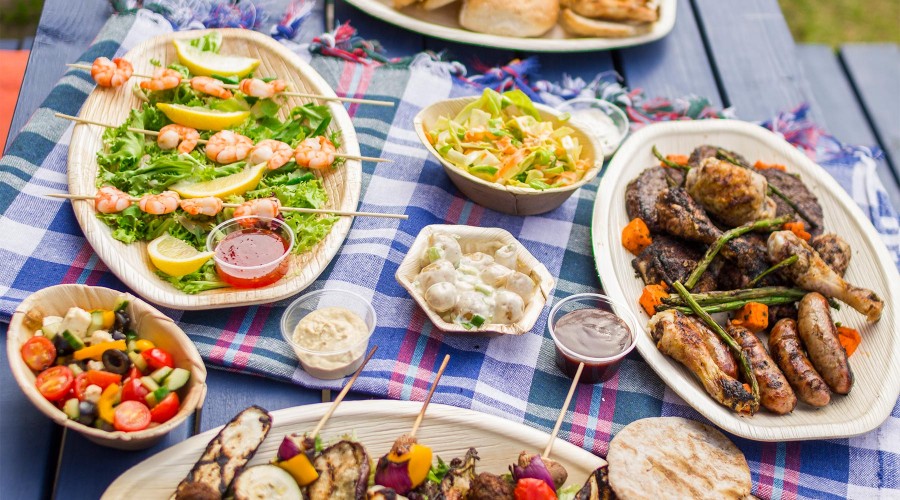
Tips for Integration:
- Complement with Eco-Friendly Utensils: Pair palm leaf plates with wooden or bamboo cutlery for a completely sustainable dining set.
- Consider Composting: Set up a compost bin to dispose of used palm leaf plates and educate others about the benefits of composting.
- Experiment with Settings: Don’t be afraid to experiment with different table settings and decorations to showcase the versatility and beauty of palm leaf plates.
Conclusion
Palm leaf plates are more than just dinnerware; they are a testament to what can be achieved when sustainability meets innovation. By choosing palm leaf plates, eco-savvy diners can enjoy their meals knowing they are making a positive impact on the planet. Let’s embrace this eco-friendly option and make a step towards a sustainable future, one plate at a time.
FAQs
- Are palm leaf plates safe for hot foods? Yes, palm leaf plates are heat-resistant and can safely hold hot foods.
- How long do palm leaf plates take to compost? Palm leaf plates typically compost within 60 days in a proper composting environment.
- Can palm leaf plates be reused? While designed for single use, palm leaf plates can sometimes be gently washed and reused for dry foods if they haven’t been soaked or heavily soiled.
- Are palm leaf plates expensive compared to other disposable plates? Palm leaf plates are competitively priced and offer great value, especially considering their environmental benefits and aesthetic appeal.
- Where can I buy palm leaf plates? Palm leaf plates can be purchased online, at eco-friendly stores, or at specialty kitchen and dining retailers.


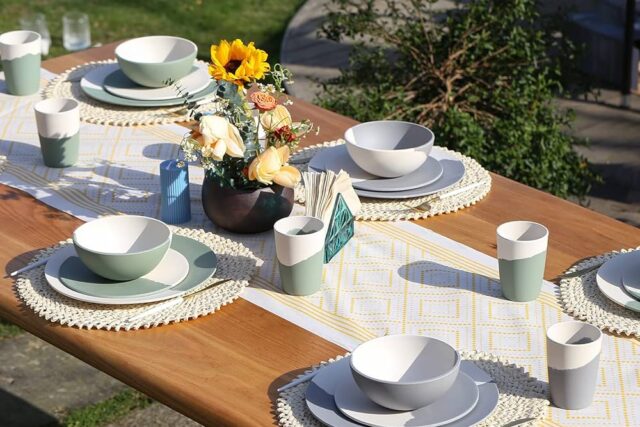
MOST COMMENTED
Animal-Based Proteins / Casein Protein / Dietary Protein / High-Protein Diets / Pea Protein / Plant-Based Proteins / Protein / Protein Deficiency / Protein Supplements / Proteins / Whey Protein / Whey Proteins
Is Protein Powder Safe for Teenagers and Children?
Animal-Based Proteins / Casein Protein / Dietary Protein / High-Protein Diets / Pea Protein / Plant-Based Proteins / Protein / Protein Deficiency / Protein Supplements / Proteins / Whey Protein / Whey Proteins
Unlock the Power of Proteins for Optimal Gut Health
Multivitamin
Total Health: Multivitamin for Active Lifestyles
Multivitamin
WellnessFusion: Complete Multivitamin Support
Dietary Supplement
Revitalize Your Health: The Magic of Red Yeast Rice Capsules
Foot care / Foot Health
Revitalize Your Foot Care Routine: Essential Tips for Optimal Foot Health
Foot Problem / Diabetics / Foot Health
Diabetics: Mastering Footwear Selection for Enhanced Foot Health and Ultimate Comfort
Exercises and Footwear Tips for Hammertoe Relief / Foot care / Foot Health / Foot Pain / Foot Problem / Hammertoes
Unlock Effective Exercises and Footwear Tips for Hammertoe Relief
Hammertoes / Foot Health / Foot Pain / Foot Problem
Unlock Relief: Essential Guide to Hammertoes Causes, Symptoms, and Treatments
Foot Problem / Foot Health
Revolutionize Your Recovery: Natural Remedies for Plantar Fasciitis – Fresh Home Keepers